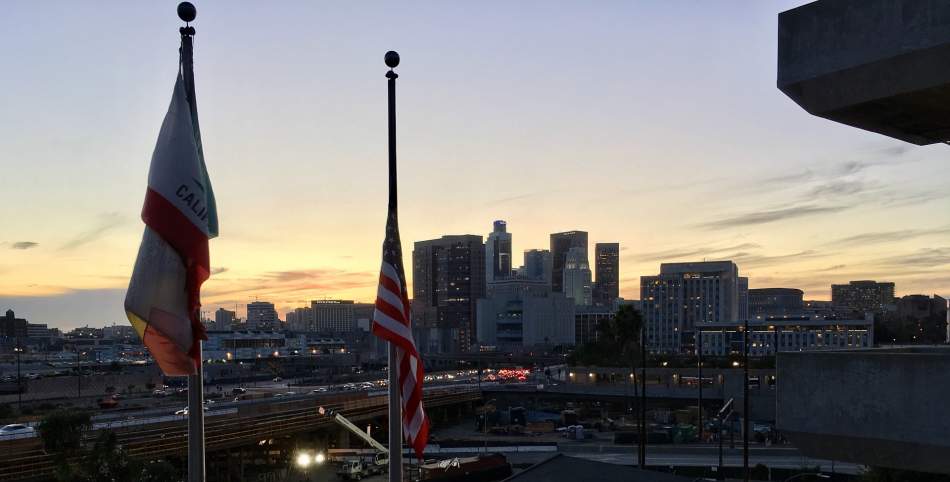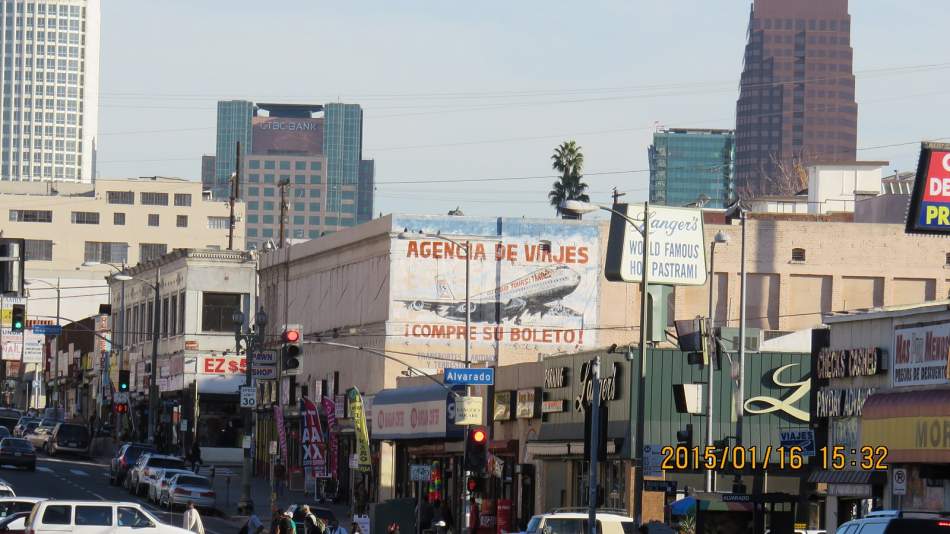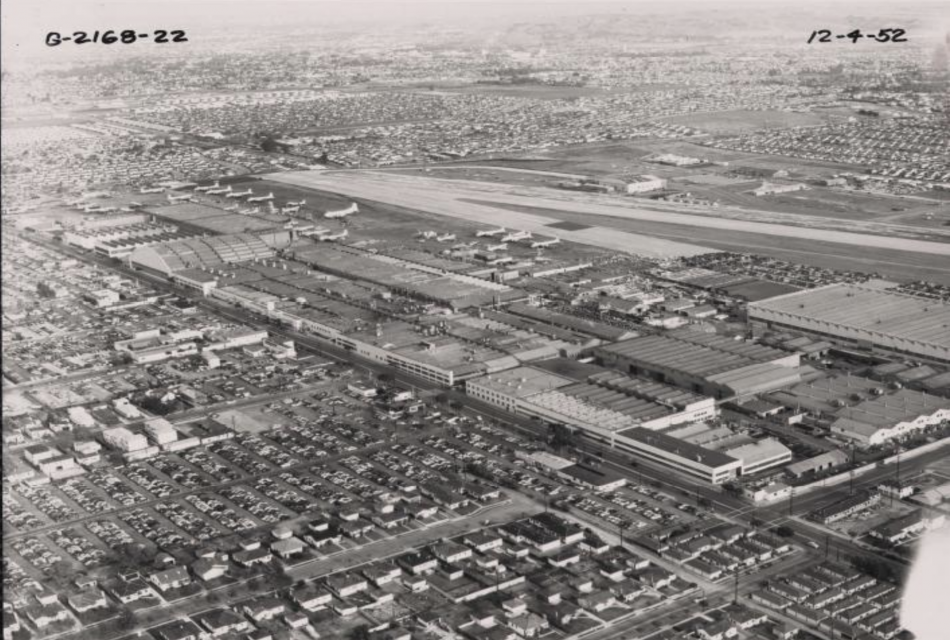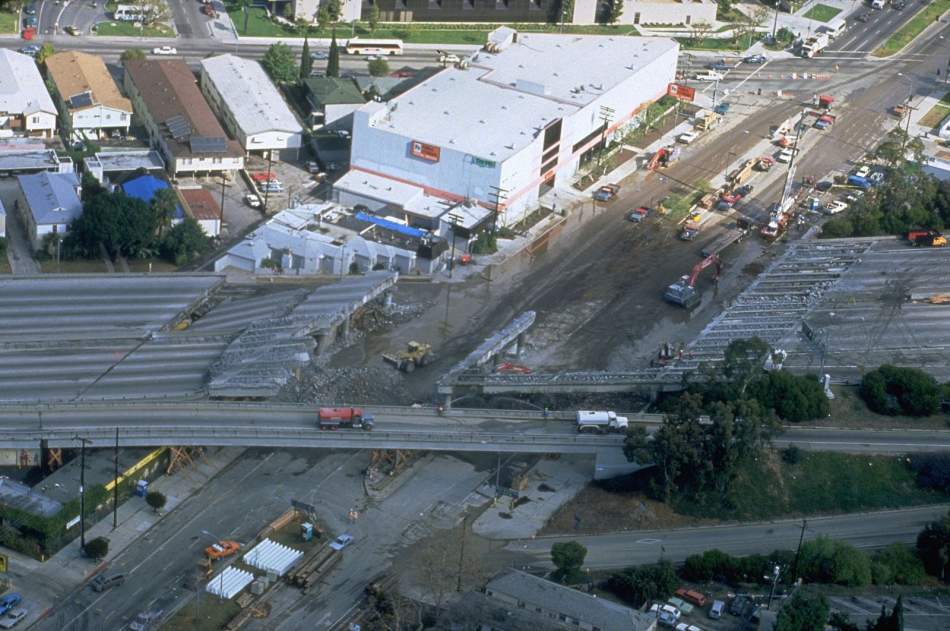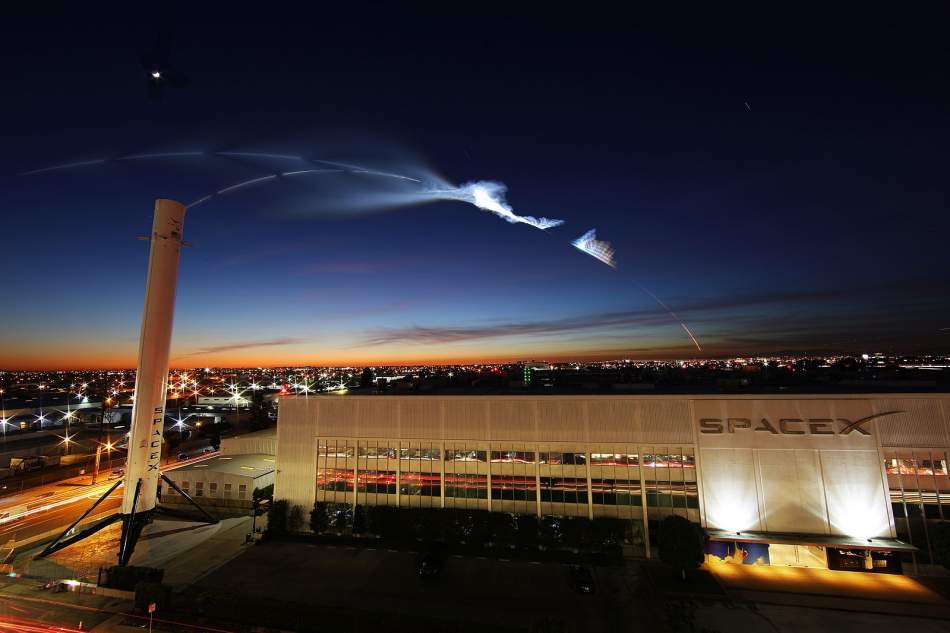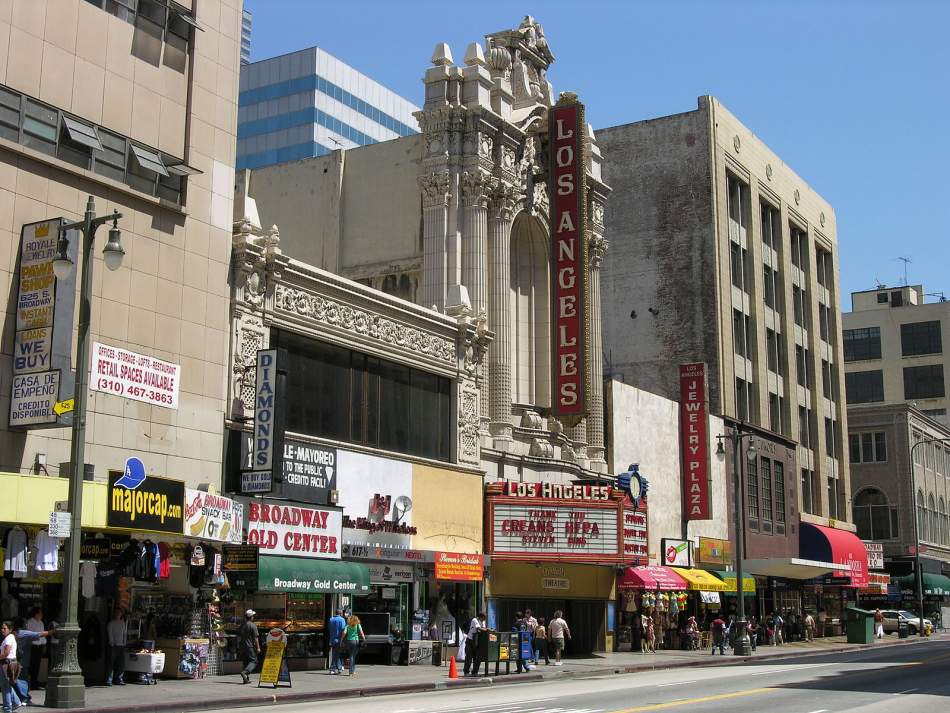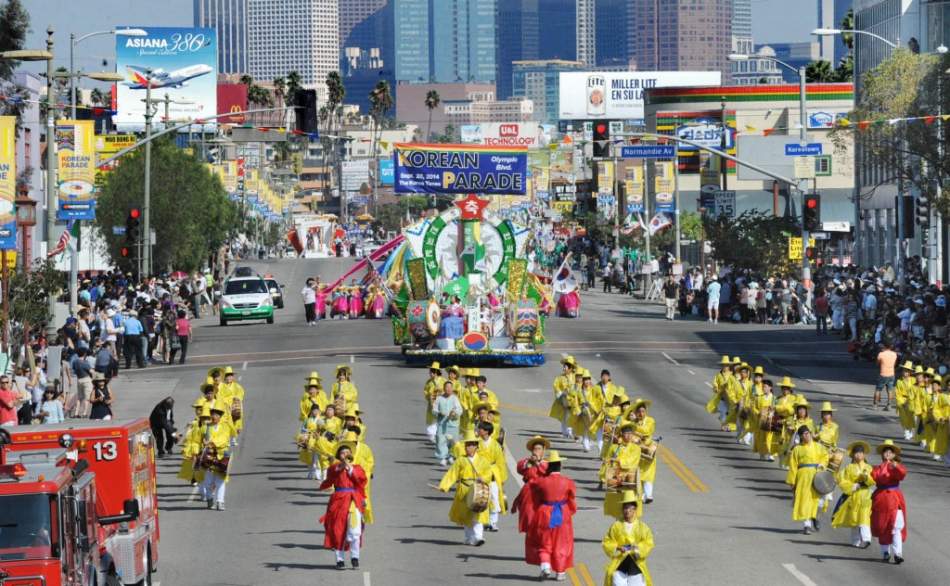From the editor: “L.A. Urbanized” is a series of articles exploring why Los Angeles is currently in the midst of an urban revolution and what it means for the city’s future. It documents the evolving development landscape of the region over the past few decades, identifies what key events brought about its urbanist turn, and considers what the impact of this transformation will be. Urbanize LA will publish one chapter of the 9-part series each Monday from April 2 through May 28.
- Introduction
- Chapter 1: Local Growth Politics and Development Patterns
- Chapter 2: The Several "Revitalizations" of Downtown Los Angeles
The popular perception of the early twentieth century New York City immigrant “melting pot” is one familiar to many Americans. Its image is imprinted onto our collective memory as an essential point in the narrative of the American Dream, wherein ‘penniless migrants from Europe pulled themselves up from their bootstraps and made better lives for themselves in the New World.’ But real life early-twentieth century New York was certainly no utopia, its hardships famously represented in the public consciousness via films like The Godfather movie series and books like Jacob Riis’s How the Other Half Lives. As New York was transformed into a global city by its migrant populations, the journey was by no means smooth. But ultimately the immigrants to New York and their American children were responsible for much of the growth of that city through the twentieth century and to this day.
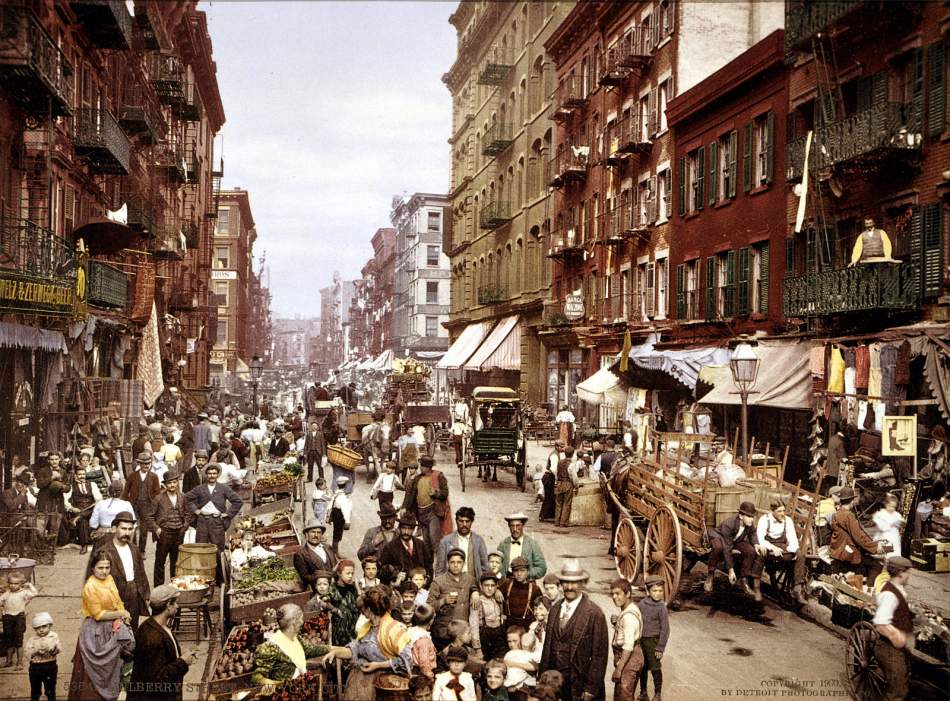
In a fashion similar to New York of the early-twentieth century, Los Angeles in the late-twentieth century experienced a sudden burst of international immigration (mostly from Latin America and Asia) that served to redefine the city. International migrants to LA contributed economically via their labor and entrepreneurialism, and their cultural contributions helped to make LA a more dynamic and globally-connected city than it had been before. But at the same time, many of the problems New York experienced assimilating its migrant communities in the early twentieth century, Los Angeles experienced during the late twentieth century. For a time, crime and ethnically-based gang violence ravaged the city of Los Angeles, the poverty of many of the new arrivals strained LA’s capacity to provide social services, and the surge in population overwhelmed LA’s transit infrastructure, bringing its freeways and boulevards to their famously characteristic halt — a paralysis that has served to isolate the various sectors of the city from one another. These challenges, coupled with certain exogenous shocks that occurred during the 1990s, provided the backdrop against which many contemporary authors about LA — most famously Mike Davis in his City of Quartz — seemed to write their obituaries for the city. Notions about the city from this era continue to shape many people’s perceptions of it to this day.
But the rumors of LA’s death in the 1990s may have been greatly exaggerated. The city’s previous 2.0 model appeared terminally ill, but this gave the city the opportunity to re-tool and look toward a new sort of future. In a fashion similar to the European migrants to New York of the early twentieth-century, over time the immigrants to LA began to integrate more successfully, and many of the challenges brought by their initial arrival have faded into the past. Certain ethnic neighborhoods which were previously marred by an association with crime and squalor, many of which in Los Angeles surround DTLA, have in recent years grown much safer and more amenable to visitors through a process that might be described as a ‘self-gentrification’ of sorts. The children of immigrants living in these neighborhoods have often achieved successful careers, yet chosen to remain in or near their home neighborhoods, in so doing altering the character of those neighborhoods.
The success of those neighborhoods, and their proximity to DTLA, has in turn made DTLA a more desirable place to be by locating it in the center of many diverse and exciting neighborhoods that are safe and accessible for visitation by an outsider. Meanwhile, LA-area industries have become more worldly in outlook, responding to changing economic incentives associated with globalization. This all comes at a time, of course, when many young and well-educated Americans across the country of the millennial generation have been developing a cultural preference for urban living, which could best be satisfied in Southern California in DTLA and other emerging Fifth Ecology neighborhoods.
The Evolving Population of Los Angeles
Migration to Los Angeles was certainly nothing novel. For much of the twentieth century, Los Angeles had been the quintessential American ‘boom town’. In 1850, the year that California entered the Union as a state, LA County was home to a total of 3,530 residents; by 1900, that figure was about 170,000 residents. Over the coming decades, the population of the LA Area would increase further, as oil and entertainment established themselves as the bedrock of the LA economy during the 1920s and ‘30s. The county population tripled to about 500,000 from 1900 to 1910, and then roughly doubled again each of the subsequent two decades, such that by 1930 2.2 million people lived in LA County.
But it was during the years following from World War II that LA experienced its dramatic population surge, as the region established itself as the center of the aerospace industry and was thus subject to massive defense investment against the backdrop of the Cold War. Additionally, many American G.I.s from elsewhere in the country had been sent to fight in the Pacific Theater of WWII via California, and found that they quite liked the abundant sunshine and open spaces; many of them chose to settle in the state in the years following from the war. By 1950, the County population had risen to over four million people; by 1960 it was over six million; and by 1970 it was over seven million.
Throughout this period international immigration was still highly limited under the 1924 Immigration Act, which functionally restricted most immigration to people from northwestern Europe. As was the case in most major American cities, African-American migrants to LA through the 1960s experienced hardship and discrimination, famously reacted against in the 1965 Watts riots. People from certain other ethnic groups moving to LA were not fully embraced by the White Anglo-Saxon Protestant establishment either during much of this time. But for many Americans, moving to Los Angeles did not present a particularly challenging cultural adaptation, and indeed it often fulfilled their own sense of the American Dream, offering well-paying jobs and single-family homes in quiet, peaceful suburbs during a time when urban living was more associated with grime and crime than glitz and glamor. The subsequent wave of migrants to LA would experience a more significant cultural hurdle.
The appeal of this kind of lifestyle was certainly not limited to people born in the United States. Across Latin America and Asia, the opportunity to move to the United States opened up by the 1965 Immigration and Nationality Act, which made it much easier for someone not from northwestern Europe to move to America, proved compelling. Political, economic, and military tumult in Central America and East Asia encouraged millions to flee for a better life in a new country, and many of these migrants chose to make the booming American city of Los Angeles their new home.
The wave of international immigration throughout the 1970s and ‘80s transformed the makeup of Los Angeles and the character of many of its neighborhoods. In 1970, only 11% of LA County residents had been born abroad; by 1980 that figure was 22%; and by 1990 it was 33%. As is the case for many immigrant communities around the world, immigrants to LA would often cluster into ethnic neighborhoods. By the year 2000, 68% of the residents of the neighborhood called Koreatown (renamed to reflect its inhabitants) were born abroad. Its neighbors East Hollywood, Westlake, and Pico-Union all report a comparable statistic, and the combined white and black population for any of these neighborhoods never exceeds 20% (for most it is under 10%). In a fashion similar to those migrants to New York in the early twentieth century, late twentieth century immigrants to LA would come to make great economic and cultural contributions, but it was not to be without a challenging adjustment period in between.
The Road to Bedlam
Kevin Starr, the eminent historian of California who typically maintained a rather positive view of the state, began his tome on California in the 1990s with the following foreboding passage:
“As a writer who had dedicated the best part of his life and writing to chronicling California, I became fascinated as the 1980s turned into the 1990s by the possibility — sometimes the probability — that California had gone seriously awry. I sensed this possibility most vividly in the epidemic of gang-related homicides and the attendant violence that seemed to pervade Los Angeles County. That foreboding became even more actualized as I lived through the Los Angeles riots of April and May 1992 and had my life altered by the Northridge earthquake of January 1994. As a more than occasional journalist and avid reader of newspapers, I became increasingly aware of the dark and somber picture of California that was emerging from California’s coverage of itself. As someone attuned primarily to the imaginative dimension of social experience and to the moral drama of California as an American experiment, I became increasingly disturbed by the grim realities around me.”
Such a dark portrayal of California, and of the Los Angeles area in particular, was uncharacteristic of this authoritative scholar of the state. Its very gloominess suggests the extent to which California really was “on the edge”, the title of Starr’s preface chapter, during the 1990s, and particularly the first half of that decade. What had brought California, and especially Los Angeles, to such a sorry state of affairs, where the economy, inter-cultural relations, and the city of LA’s ability to function generally in its existing form were all facing dire crises?
As Starr puts it, from WWII through the end of the Cold War, California was on “defense steroids.” Indeed, the economy of the state as a whole and especially of the LA area was propped up by substantial military spending, focused on the aerospace industry in Los Angeles. But as the Cold War came to an end from 1989-91, the federal government saw less of a need to invest in LA’s business of war, and so suddenly one of the key Southern Californian industries found that it had lost its patron. Starr continued, “For fifty years, California had mistaken the rush of military spending as merely the exhilaration of its own intrinsic economic strength, and now, like an addict going clean and sober, the state was forced to acknowledge its dependency and face the future, shaped up and chastened.”
With one of its major legs suddenly beaten and bruised, LA’s economy quickly went into recession, of a magnitude that pulled the rest of the nation’s economy into recession along with it. Aerospace, perhaps to an extent even greater than entertainment during the Cold War, was the driving force of LA economic expansion. And while a lot of aerospace research and development remained (and continues to remain) in LA following from the end of the Cold War, almost all major aerospace manufacturing sites in the region were closed or relocated, decimating the regional job market permanently. Future federal funding for military aerospace research in the region was quite unlikely match Cold War levels, without the Soviet threat existing to encourage it.
The other major economic disaster of the early 1990s was the bust in the LA (and national) real estate market. Across the country, through the 1970s and up to 1986, when the Tax Reform Act put an end to this practice, the tax code was such that many businesses were incentivized to develop buildings that were expected to be unprofitable. Essentially, the tax laws of the day allowed the depreciation and losses of real estate assets to be applied against non-real estate gains. In certain cases, the math worked out such that the tax savings provided for by this depreciation were greater than the losses incurred on a real estate investment, making a bad real estate deal a net profitable strategy. The natural effect of this perverse incentive structure was an oversupply of the real estate market, as unprofitable new buildings flooded the scene. This challenge of oversupply was only exacerbated by the mass infusion of Japanese capital through the 1980s, which propped up prices further, and the concurrent attempts to force the development of office skyscrapers in Downtown Los Angeles, as described in last week’s installment. By the early 1990s, when the Japanese economy slowed down and the city’s real estate owners suddenly found themselves in a supply glut in a slowing local economy, property values across the region crashed and a great deal of wealth was quickly wiped out.
These economic challenges brought about by the downsizing of the aerospace industry and the real estate market collapse were only exacerbated by the new threats to LA’s critical manufacturing industry. In a fashion increasingly familiar in today’s political discourse, technological improvements as well as low-cost competition from Asia and Latin America — and also from lower-cost American states — significantly impacted the manufacturing job market of the region throughout the 1990s, as globalization began to hit its stride around the world. While this development was a boon to other sectors of LA’s economy, it did have its bite when it came to local manufacturing jobs.
* * *
But perhaps LA’s greatest challenges during this time were not economic in nature. Rather, faced with a rapidly expanding population from a very diverse array of backgrounds, coupled with endemic socioeconomic challenges that had existed for decades in the region and had only been exacerbated by the recent economic calamities, the very social fabric of Los Angeles appeared to be coming apart at its seams. Recent immigrants to Los Angeles mostly came from impoverished backgrounds, and often faced discrimination upon arrival in the United States, limiting their initial opportunities for advancement. Further, relations between different immigrant groups to LA and with those that lived there previously were not always peaceable. The ‘80s and especially early ‘90s witnessed an epidemic of ethnically-affiliated gangs across Southern California, leading some to dub Los Angeles at that time as the “gang capital of America.” It was also the ‘murder capital of America’, as astonishing and rising crime rates across the region during that time period would attest to. Mike Davis, seldom one for understatement, declared that by the late 1980s “the social and politico-economic tectonic plates that underlay Los Angeles [...] had accumulated such impossible stress loads that you could almost hear the Hollywood Hills groaning.” Indeed, those tectonic plates were to come crashing into each other over ensuing years, adding yet another catastrophe to this generally calamitous period in LA’s history.
The story of the Rodney King civil disturbance, which wracked Los Angeles for six days in 1992, is likely familiar to many readers. This event, the largest civil disturbance in America during the twentieth century, was essentially a response by some in the city’s African-American community to decades of mistreatment by law enforcement and to the perception, reinforced by several inciting incidents that took place over the prior year, that the criminal justice system in general was rigged against them. The immediate spark for the civil unrest was the acquittal by a mostly white jury of four white police officers who had been videotaped brutally beating black motorist Rodney King in a manner which flatly appeared beyond the scope of their enforcement duties. The riots claimed 58 lives and destroyed billions of dollars in property, with the Korean-American and of course African-American communities particularly affected. President George H.W. Bush was required to send the US Marines into Los Angeles to restore order. But the damage of the riots went deeper, exposing a wound at the heart of LA’s socio-economic fabric which would take generations to heal.
As if the figurative earthquake of the civil unrest had not been enough, Los Angeles was hit with a literal earthquake during the early morning of January 17, 1994. Fortunately, the Northridge earthquake took place early enough in the morning that few people in LA were outside of their homes, so the human toll of the disaster was limited — although the earthquake did claim tens of billions of dollars in property damage. Perhaps the greater toll of the earthquake, however, was one of perception. Coupled with a series of droughts, floods, and wildfires over the course of the decade, the earthquake made it appear to many that LA was physically falling apart, in addition to suffering a decline of the more abstract sort.
All of these calamities were occurring against the backdrop of an existential structural challenge facing the Los Angeles 2.0 growth model. Not only had popular opposition to further development grown substantially over the prior decade, but by the early ‘90s LA had effectively run out of available undeveloped land on which to sprawl further. Moreover, with more and more people moving to the region and clustering into ever-tighter quarters, while the supply of road space was essentially constant due to concurrently developed opposition to freeway expansion, mobility across the region had been slowly grinding to a halt for decades. Indeed, while in 1950 serious traffic congestion on the freeways was a relative rarity, by 1985 Angelenos were on average spending 58 hours per year stuck in gridlock, by 1995 that figure had grown to 70 hours, and by 2014 the number had grown even further to 80 hours. Impassible congestion presented a more fundamental challenge to the urban form of LA 2.0. It became increasingly difficult for workers to move just a little further away to more affordable areas and commute a bit further to work, because that greater distance to cover entailed significantly more time stuck on the commute due to increased traffic delays. Thus, the value of homes closer to job centers was pushed even higher, rendering them even further out of reach for most Angelenos.
* * *
Given these challenging structural conditions and the series of calamities that occurred in the city, it is unsurprising that many Californians and Angelenos specifically permanently departed the state during this period of time. As Kevin Starr described, “between 1990 and 1993, some 600,000 émigré Californians packed up and left,” often finding California “too crowded, too polluted, too competitive, too dangerous, and too expensive.” Most of those who left Los Angeles went to Las Vegas, Phoenix, Texas, or even more distant suburbs of LA in the Inland Empire. What this settlement pattern reveals is that these émigrés were seeking a past version of Los Angeles, one which had operated functionally under its 2.0 model, in that all of these places were essentially built in imitation of that urban form. Indeed, William Fulton devotes a chapter of his work The Reluctant Metropolis to the concept that suburban Las Vegas is in fact a latter-day clone of the old-style Los Angeles, complete with similar architectural styles, familiar branding strategies, and certain industries that resemble antiquated ones from LA.
Doubtless enticed by the schadenfreude of watching a city once so often portrayed as a paradise, yet home to a frequently vapid and self-congratulatory Hollywood as its most visible industry and cultural force, it did not take long after the initial cracks in LA’s façade of palm-tree-paradise began appearing for writers to pounce and declare the end of this city. Indeed, the most famous critic of LA during this period, Mike Davis, published his work on this topic, City of Quartz, in 1990, before many of the greatest shocks to the city had actually taken place. Perhaps Davis was prescient in some regards here, but his book is so monotone and unrelenting in its critique of Los Angeles — and Los Angeles specifically — that that it strains credibility.
Generally speaking, Davis portrays Los Angeles as a “new Dickensian hell of underclass poverty” and little more beyond that narrow characterization. While LA did and does struggle with poverty, it is clearly not the full picture of life in this metropolitan region, which had for decades been so successful as to attract the very migrant peoples from across the country and the world whose plight Davis laments. What may be most important about Davis’s work, however, was the extent to which it was accepted as the defining work on Los Angeles throughout the course of the 1990s, and in certain circles to this day. Indeed, as Kevin Starr puts it,
“Whatever the merits of Davis’s analysis [...] the sheer popularity of City of Quartz was in and of itself a symptom of the psychological condition of the city, at least among its book-reading public. The very fact that such an unmitigatingly bleak view of Los Angeles should be so immediately accepted as the final word said something very important about the psychological state of the city in the early 1990s.”
The attraction of Davis’s writing proved so strong, in fact, that it took almost a decade after the publishing of City of Quartz for readers (in particular, an early mover to DTLA named Brady Westwater) to uncover a fair number of factual errors and baseless claims made throughout the book, a development that has shaken but not dislodged the hold of this book on many people’s perceptions of the city to this day. Gloom was clearly ascendant at the time. Most books written through the 1990s about Los Angeles adopted a similarly apocalyptic tone, and were often formulated almost as post mortems for the city that had died. It was to become clear, however, that many of the challenges of the late ‘80s and early ‘90s were to become the opportunities of the late ‘90s to the present day. It was to become clear that Los Angeles had not died entirely, it had only died in its 2.0 form, and that the city was to be born anew, like a phoenix rising from its ashes, as the world passed into the twenty-first century.
The Road to Recovery
In any textbook Hollywood drama, the prospects for the protagonists always appear most dim just before they overcome the odds to achieve ultimate success. Through the mid-’90s, Los Angeles passed through its period of extreme hardship and it emerged, though certainly not unscarred, with a new sense of life. Having been knocked on their heels by the challenges of the late ‘80s and early ‘90s, people in LA began to healthily doubt their old growth models and cultural ideals, thus opening the door for a new approach to the city to be developed.
Indeed, many of the sources of LA’s troubles during the down phase were to become the wellspring of its recovery. The defense-related engineering firms across the region were able to ‘beat their swords into ploughshares’, adapting their technologies and rechanneling their efforts into providing products for the civilian economy. Over time, it was to become clear that LA’s large and varied immigrant population was also an asset rather than a liability as migrant groups adapted to American life and contributed new dimensions to it, founding companies, adding vitality to urban life by operating small businesses, and providing cultural and personal links to their original countries that would later serve as the basis for international trade and investment.
Culturally, LA’s native-born communities adapted to this new world as well. It was during the 1990s, after the fall of the Soviet Union and the conversion to capitalism of many economies around the world, that economic and cultural globalization hit its stride. And closer to home, many well-educated members of the millennial generation decided that the suburban single-family home so desired by the preceding few generations could wait, and that they wanted to live out their youth in the city. All of these factors realigned Los Angeles, setting the stage for a new iteration of the city to emerge in its 3.0 model.
* * *
LA took a great hit when it lost much of its funding for the aerospace industry following from the end of the Cold War. Many local businesses set up to provide for military aerospace technology went out of business, and thousands of manufacturing jobs were lost. But not all of LA’s military contractors simply threw in the towel when their largest customer left them. Rather, many of these LA-area businesses set out to find new sorts of customers. For example, Starr describes “Natel Engineering of Chatsworth, which had previously manufactured electronic components for Stinger anti-aircraft missiles, turned under the guidance of its Indian-born CEO Sudesh Arora to the making of heart pacemakers and implantable defibrillators.” Many local companies made similar leaps, and while these realignments could not entirely replace the economic or jobs contribution of the old defense-oriented contractors, it did mitigate the blow and maintain a place for skilled engineers in the region. The continued home for these engineers is important for LA today, as the city takes on an increasingly important role in the modern computer-based technology boom.
What was more transformative for the region since the early ‘90s, however, was the changing role of its immigrant groups. Generally speaking, in a fashion similar to the early-twentieth century New York immigrants’ story that is culturally so familiar, the late-twentieth century migrants to LA (and other cities across the US) have been adapting well to the new country — and their American-born children usually find higher-paying work than was possible for their parents. Immigrant neighborhoods are often at the heart of this process. Indeed, writing in 1997, the urban economist Joel Kotkin spoke of the Pico-Union neighborhood, located immediately southwest of DTLA, one of the most impoverished in the city, and home to a very large immigrant (specifically Central American) population, as LA’s version of New York’s Lower East Side of old. Generations of Jews, Irish, and Italians passed through the tenements of the Lower East Side, suffering through a period of poverty and high crime — Kotkin reminds his readers that Jews in 1906, at that time forming the bulk of the Lower East Side’s population, “accounted for roughly one-third of those entering New York's children’s court” — but ultimately moving toward a brighter future. Kotkin is sure to point out, however, the distinction between high poverty and high crime levels; Pico-Union may have been poor, but its crime rates were relatively low and moving in the right direction by the late ‘90s.
In many cases, the children of immigrants who have done well professionally have maintained close links to their hometown neighborhoods, in so doing acting to transition those neighborhoods toward greater affluence from within — a process sometimes jokingly referred to when applied to largely Latino neighborhoods as ‘gentefication’. Take, for example, Alfred Fraijo Jr., who has come to be known in LA for championing the creation of a new park over the freeway in Hollywood. As profiled in an Urban Land Magazine “40 Under 40” report, Fraijo, the son of a Mexican immigrant and the first member of his family to attend college, grew up in Boyle Heights, gained admission to Harvard College, and went on to become the youngest attorney to achieve the status of equity partner at the prestigious law firm Sheppard Mullin Richter & Hampton. Having reached career success, Fraijo “bought a home in Boyle Heights. Now, he sees himself as a cheerleader for the neighborhood.” Boyle Heights, adjacent to DTLA, is at the center of some of today’s struggles concerning gentrification (of the traditional, rather than ‘gentefication’ sort) in LA, but Fraijo advocates for a measured approach, seeking to “change things [in the neighborhood] and empower people at the same time.” Fraijo’s case may be an outlier in terms of how successful he has been, but the general pattern of this sort of intergenerational neighborhood evolution remains valid for many immigrant communities across the city.
Another driving factor toward the improvement of immigrant neighborhoods was the strong entrepreneurial spirit of immigrant communities. It has long been documented that immigrants to America are more likely to found businesses than are native-born citizens, perhaps a statistic which should not be too surprising considering the personal initiative required for one to uproot one’s life to make a better one in a far-off land of opportunity. Taking the Pico-Union example again, in the late ‘90s the neighborhood had the highest rate of new-business formation in Los Angeles County. This was by no means an anomaly. Immigrants from Latin America and Asia founded a number of businesses across the region during the 1990s, more often than not locating them close to their ethnic enclave hometowns. Many of these businesses went under the radar of most academic analyses of LA’s economy during the late ‘90s, because few of these businesses were large enough to be viewed as the obvious forces for economic growth as were the old aerospace firms, but taken cumulatively they were bringing the local economy new life given their sheer quantity.
The culture of certain immigrant groups was also acting to move Los Angeles in a new direction: toward a more urban sort of existence. Perhaps the most extensive case study of how immigrant groups — from Latin America specifically — have contributed to urban life in America is to be found in Mike Davis’s Magical Urbanism. Davis, writing in the year 2000 and finding himself relatively upbeat as compared to his writings in City of Quartz, convincingly documents the means through which Latino immigrants in major American cities, and LA in particular, have revitalized some of their neighborhoods by repairing the building stock and engaging in commerce on the streets. Christopher Hawthorne, architecture critic at the LA Times, has picked up on this concept further more recently, employing the term “Latino Urbanism” to describe this pattern of vibrant street life that exists in Latino communities across the city. Some of the DTLA areas that are being ‘revitalized’ as trendy districts today were in fact already revitalized by Latino groups decades earlier. In one example, Hawthorne describes the pedestrian-friendly alterations being made to Broadway in DTLA as “superfluous: the urban-planning equivalent of carrying coals to Newcastle. Broadway has for several decades been among the most popular and vital walking streets in Southern California, one typically crowded with Latino shoppers, including many recent immigrants from Mexico.” Moving beyond Latin American immigrants, many immigrants from Asia have also taken to street life. Koreatown, most notably, has the highest population density and amongst the most vibrant street lives of any neighborhood in Southern California. These communities are often clustered in close proximity to Downtown Los Angeles, where living was relatively inexpensive due to flight to the suburbs over previous decades and where low-cost public transit was relatively accessible due to the dense population in the inner city. By their proximity to Downtown, these neighborhoods have made DTLA a more attractive location as well, because of easy access to these vibrant neighborhoods.
Looking beyond this country’s shores, the presence of migrant communities in major cities like Los Angeles has allowed them to serve as bridgeheads for trade and investments with those countries. It is common for many members from a particular community in a foreign country to migrate en masse to a single community in America, such that the social and economic links between this migrant community in America and its counterpart in its home country are very strong. The phenomenon of how migrant communities play a key role in the economic life of their previous home as “transnational suburbs” has been well explored by Mike Davis in his Magical Urbanism. Less well explored is the movement of economic value going the opposite direction, where immigrant communities in America act as conduits for trade with and investment into America from their home countries. Such links would prove critical for bringing investment capital into Los Angeles to fuel the current development boom, a concept which will be explored in much greater depth in Chapter 5.
* * *
LA’s culture was changing dramatically through the 1990s, and not just due to the cultural influence of its migrant groups. The businesses of LA’s major industries grew much more global in nature during this period of time, in line with growing globalization of all industries around the world, re-orienting the cultural worldview of the city’s elites along with them. LA’s seaport and airport, both amongst the busiest in the world during the 1990s and to this day, were increasingly positioning themselves as the cargo gateways from Asia to America, establishing a dominant position nationally in this space.
But it was in the entertainment industry where these cultural impacts were to be most profound. Through the ‘90s (and to the modern day), the entertainment industry in Los Angeles grew dramatically, with jobs in the movie industry alone growing 40% from 1993-6. A major cause of this growth spurt was the expanding international market for Hollywood movies. Indeed, as globalization marched forward, Hollywood studios began finding increasing portions of their profits coming from outside of the country. Accordingly, Hollywood increasingly needed to be producing movies with an international audience in mind, and so it needed to grow more attuned to international cultural preferences, political systems, and legal codes. Financing and production for films was increasingly pursued on a global basis. Economic interests often morph into cultural ones, and as LA elites increasingly found their major industries focusing on business in Asia and elsewhere, while the people of the city were coming from all over the world, the mentality and worldview of these elites needed to shift toward a more global outlook along with their city.
These economic developments and their concomitant cultural evolutions in LA were taking place alongside a great cultural shift amongst America’s youth. While for generations most Americans had desired to purchase a quiet home in the suburbs, increasingly from the ‘90s through to the modern day young and (especially) well-educated Americans have desired to live their years of youth in an urban context. In part, this cultural shift is surely the result of some of the old disadvantages of urban living no longer applying. City centers used to be associated with high crime (they provide an economy of scale for criminals, in addition to one for businesses), but crime rates have dropped precipitously from their peak in the early ‘90s. Sanitation and air quality in city centers used to be quite poor, but modern building codes, sewage systems, and post-industrial urban areas have generally dealt with these challenges. And for too many, urban cores were unappealing because they needed to be shared with so-called ‘undesirable’ ethnic minorities; younger generations are generally less given to such overt prejudices.
For those young professionals with disposable income, the entertainment options offered by living in a city center are often more enticing; and they can be accessed more freely when one does not need to worry about driving home. All of these incentives for young people to want to live in city centers are existing against the backdrop of marriage being increasingly deferred until a later age, meaning that young people can wait longer to think about living in a place with good schools and places for children to play, expanding the number of people for whom an urban lifestyle is most amenable. Young professionals seeking this sort of lifestyle in Southern California would have been challenged to find it through the 1990s. But while this sort of environment would have been hard to imagine for Los Angeles in the early 1990s, the breakdown of the city’s model during that time opened the door to new possibilities, which were seized upon aggressively over the decades to come.
Previous Installation: The Several "Revitalizations" of Downtown Los Angeles
Jason Lopata works as a land use consultant with Craig Lawson & Co., LLC, helping real estate development projects in LA navigate the city approvals process. Jason previously spent time on the Business Team of LA Mayor Eric Garcetti. He also writes articles on globalization and urban development for Stratfor, the geopolitical analysis website. Jason received his bachelor’s degree from Stanford University and completed programs of study at the University of Oxford and at UCLA’s Anderson School of Management. While at Stanford, he founded and led the student real estate organization, and authored his senior thesis on Los Angeles development over the past 30 years.




